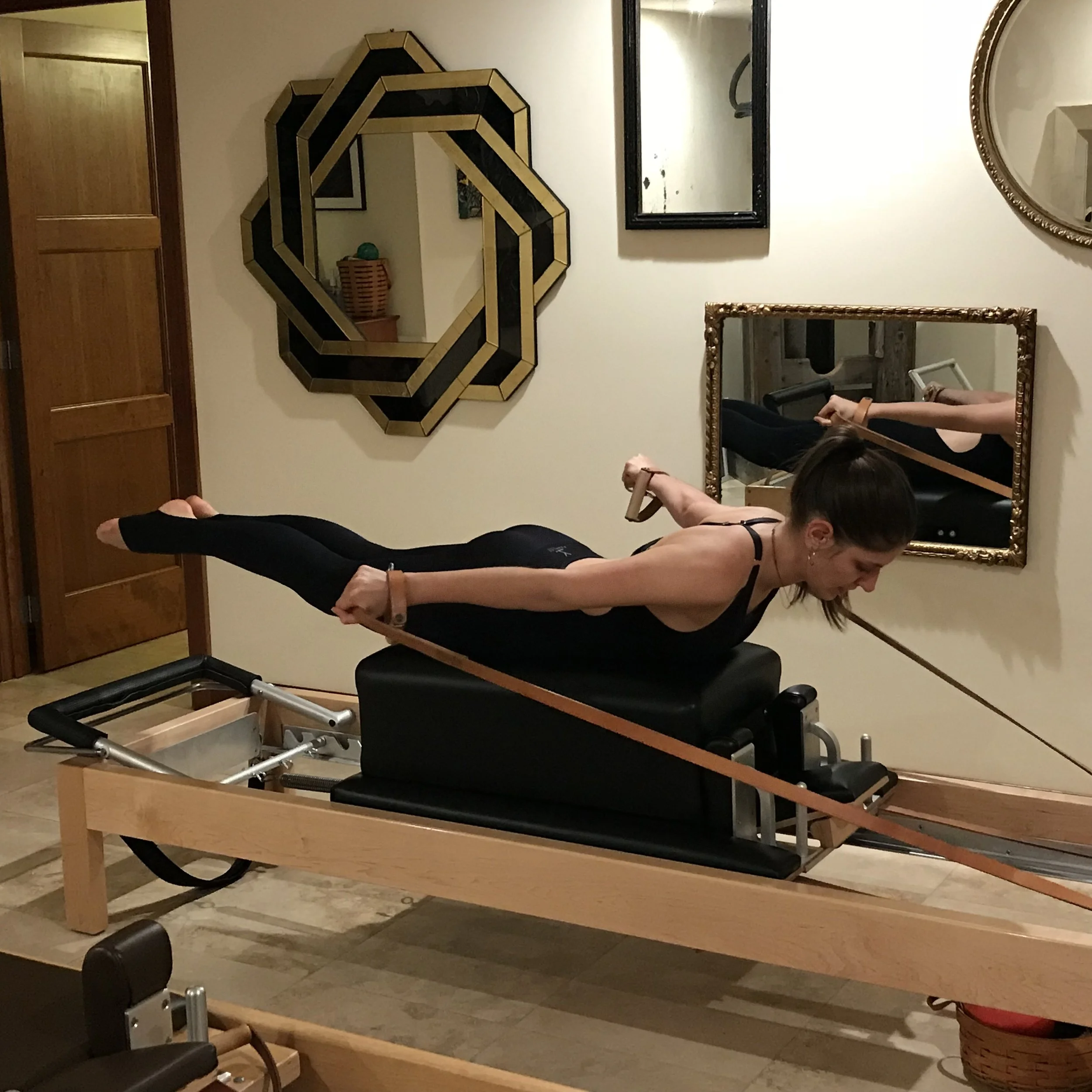Why Every Runner Needs to do Pilates
/Sometimes more isn’t better. In a runner’s case, more miles can lead to injury or strain. However, if running is your passion or how you decompress after a long day you shouldn’t have to give it up. Many runners have turned to Pilates to strength train, increase flexibility and rebuild from an injury.
Running requires the body to perform the same movements over and over for long periods of time. This high impact, repetitive motion often builds up only a few muscles (think quads) while many others are underdeveloped (like hamstrings, glutes, abs). This is a perfect recipe for strain and injury because there is a weakness and/or tightness somewhere in the body. Our bodies are made to work like an orchestra…each muscle contributing to a movement like each musician adding their sound to a song. One or two muscles shouldn’t be doing all the work but more often than not, that is the case.
Some of the most common injuries caused by running are in the knees, IT (Iliotibial) bands, hamstrings, shin splints, plantar fasciitis, low back and the list goes on. If you have experienced any of these issues you know how frustrating it can be to have to slow down or even cut out running all together while your body heals. That doesn’t just take a toll on the body but also the mind.
Enter Pilates.
Pilates as an exercise method was developed so that its practitioners can achieve “true health” and as founder, Joseph Pilates, stated, “When all your muscles are properly developed, you will, as a matter of course, perform your work with minimum effort and maximum pleasure.”
What does this mean? Pilates works the entire body with each and every exercise in the repertoire. This muscle synergy builds the smaller muscles that aid the larger muscles so that they can share the load and effort. Plus, your core is constantly engaged which is critical in keeping your spine protected and strong. Many people don’t realize that a strong core is the best way to reduce back pain as the abs support the front of the spine. Because Pilates is low impact, your joints aren’t constantly stressed like they are during a run however you will never feel a better full body workout after a session. Another great thing about Pilates? You won’t get bored. You can choose between mat or equipment classes (Reformer, Cadillac, Chair, Tower, etc.) or take it up a notch with a private lesson with a certified Pilates teacher to go deeper into where your imbalances are and what your body needs to strengthen.
Depending on your goals or where you are in your running (or fitness) journey, you can do Pilates once or twice a week to see more results. Joseph Pilates encouraged people to do his work daily and many do. Several of our clients have seen less pain or reduced number of injuries after they implemented Pilates into their fitness regime. Others have also experienced better overall performance including reducing time off their runs, more flexibility and better posture. So even if Pilates isn’t your first choice when it comes to working out, it will certainly help you be stronger so that you can continue to pursue whatever passion moves you.
What Our Clients Say
- Jenelle
“As a 57-year-old woman, bone density is at the top of my list in order to maintain an active lifestyle. As a lifelong runner, mobility, balance, and flexibility are critically important to my longevity in the sport. Pilates offers a great cross-training opportunity to enhance all of these functional areas…keeping me strong and injury free.
Working with Victoria at Mogo Pilates has improved not only these functional abilities, but also my posture. I struggle with slouching shoulders and a weak core. Pilates has strengthened my core, enhancing not only my running, but also my everyday life. I look better, feel better, and perform better!"
- Dyana
"Running is my favorite activity and I have finished several marathons, half marathons and trail races. I was looking to find something that was low impact and would help me strength train in between races. After being introduced to Pilates by Katie at Mogo, I can tell how much foot placement can impact my running. She has taught me how to properly align and utilize my feet. Strengthening this connection to my knees and hips has made my stride better and I don't have pain in my knees anymore.
Pilates has helped me stretch out, too. I didn't realize how tight my muscles were on a daily basis. Plus, I love the core work which has taken away the strain on my low back. I definitely recommend Pilates to my running friends and wish I had started it sooner!"






















